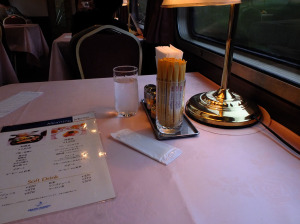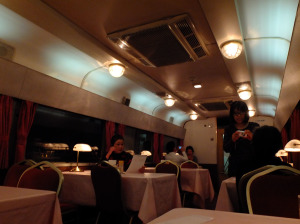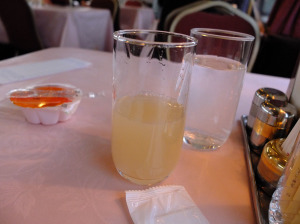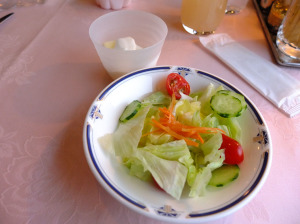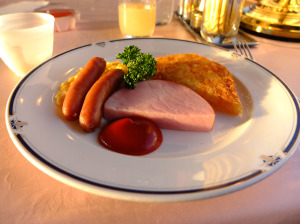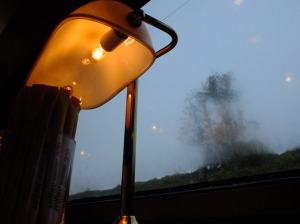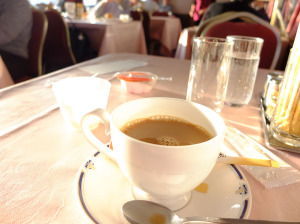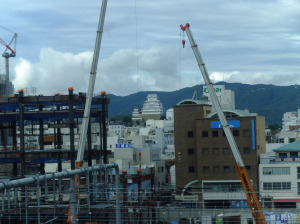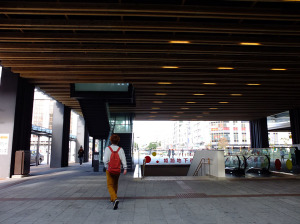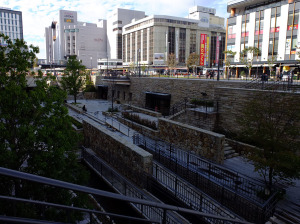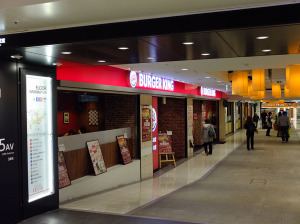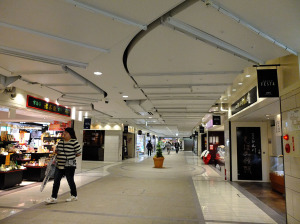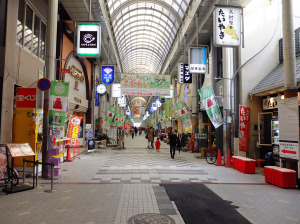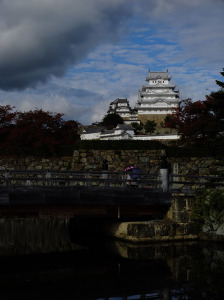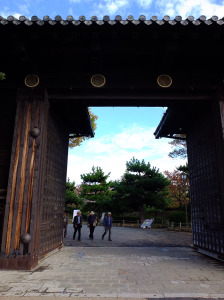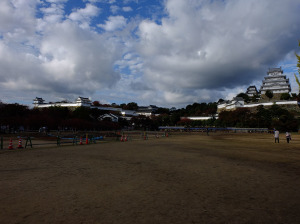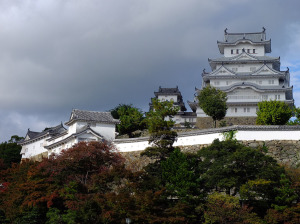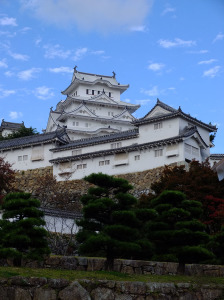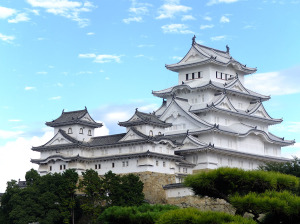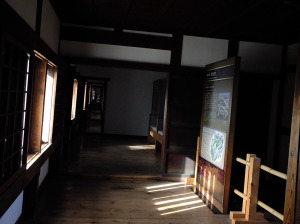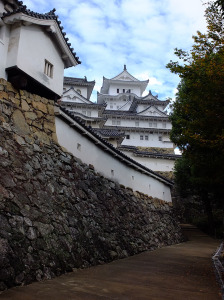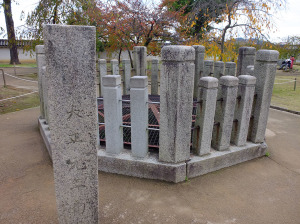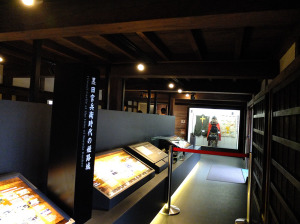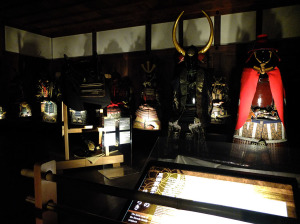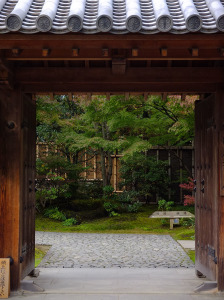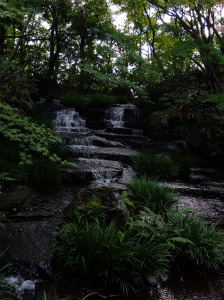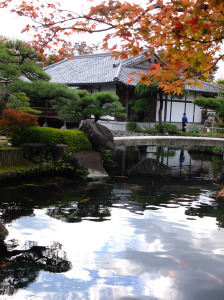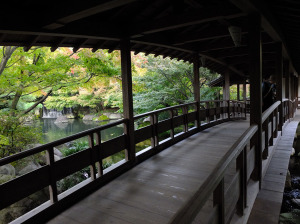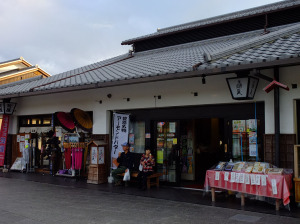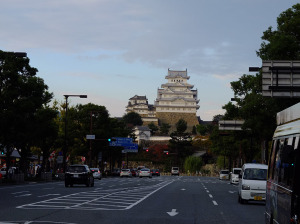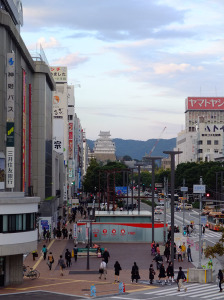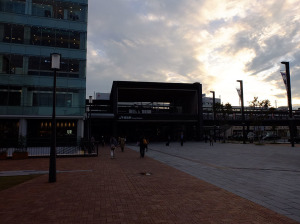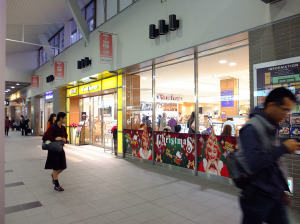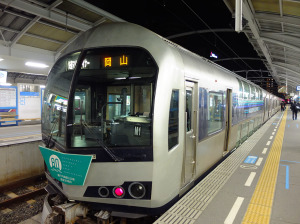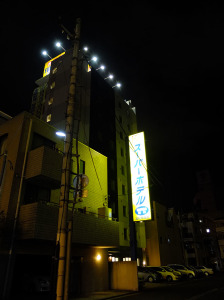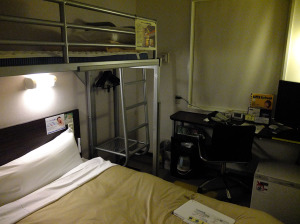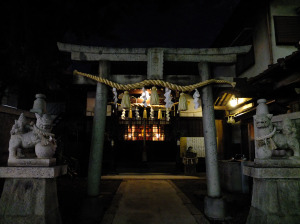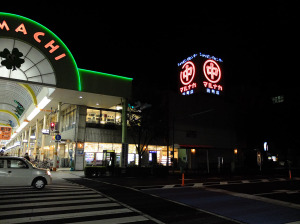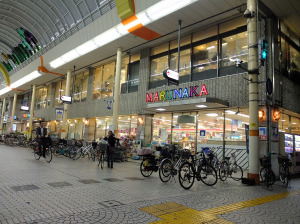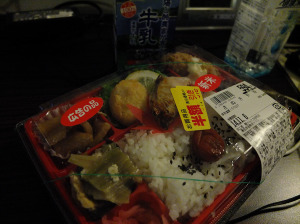Yesterday was a terrible day, probably the worst day I’ve ever had on any trips, that includes that time during my very first travel when having burned myself out in the previous days, threw up soon upon arriving in Kamakura and had to call it quits that day before even 9am.
It’s always darkest before dawn.
And dawn is here.
During the night I had a dream, a dream about the story I’ve been working for some time now. Set in the 1870s, in the dream I assumes the main character and traveled across the countryside with his companion. Details aside, it was one of those vivid dreams I have not had in recent times, months, perhaps even year.
It was beautiful, across the dark landscape, the train carriages rumbled rhythmically, thumping and jarring at banks. An endless and quiet journey in a swaying cradle toward distant lands, the monotony broken by only the occasional shrill sound when steam shoot up through the whistle atop the locomotive.
This is what it was like to travel by train in days bygone, I reminisced.
No hurtling at 300km/hr, no blaring horn blown from speakers and no noise insulated carriages. When journeys are measured in days not hours, and visiting friends the next town over took an weekend not single afternoons. A single reading lamp by the bedside was a luxury and calm that keeps away the lone dark. A period incomprehensible to modern urban dwellers.
I goes to the lounge car, the cloud over the mind slowly parting.
Not long, a young Japanese man comes in and sat down, awaiting for his allocated time to use the shower located at the end of the lounge car. We have some brief chat, but he does not know much english so the conversation is slow and awkward.
At 6:30, a train attendant comes over from the adjoining dining car and announces breakfast are now being served.
There’s a choice of western or Japanese breakfast. I chose western of course.
Breakfast is 1650Y, the food is okay, nothing noteworthy.
I stayed in the lounge car, enjoying the view outside while planning the day out.
The train is meant to arrive in Ueno in Tokyo around 9:30, but is running quite a bit late. I thus wondered if it’s possible to disembark early and make up some time with the Shinkansen.
Having checked against the timetables and ran a few scenarios in the head, I hop off at Utsunomiya.

At Utsunomiya. The locomotive is different from the diesel one at Sapporo, having changed at Hakodate
Even including the waiting time for the Shinkansen, it’ll still shave at least 30 minutes off compared to if I stayed on with the Hokutosei. Then at Tokyo, if I’m really lucky, I might be able to make one of those rare Hikari express that goes all the way to Okayama, I’ll just have to make the connection in 3 minutes.
As soon as the train stopped and the door opens, I run madly down the stairs to transfer to the Tokaido Shinkansen. In my hurry I actually overshot and had to backtrack to the correct numbered platforms. Miraculously I still made it with seconds to spare.
The JR Pass cannot take the fast Nozomi trains which takes up about 70% of the trains on the Tokaido Shinkansen, which means foreigners are crammed into the few Hiraki trains (about 2 every hour). This one is no different, with I estimate about 50% of the passengers foreign tourists.
The morning passed as the train passed Shizuoka, Nagoya, Kyoto then Shin-Osaka. At this rate I’ll probably get to Takamatsu at about 3:30pm. In time to check in to the hotel but not do much else. As I had known, day wasted.
The train’s announcement then sent a jolt through my mind. Next stop will be Himeji.
Maybe I can make up some of the day at Himeji. With the time a bit after 12:45, include a quick lunch and travel time to castle and back, assume sundown at 4:30, that should give me close to 3 hours.
I hesitated, the shadow of yesterday yet lingering.
The white walls of Himeji castle comes into view. The last time I traveled past on the way to Matsue the castle was still under renovation and covered by a giant shelter. This time it stand bare in the distance, imposing its bright form and many eaves over the city.
The body acts on its own, and moments later I am off the train.
Himeji, the mind snap back into travel mode, the excitement of being in unknown city once again flowing through the veins.
I grab a burger in the station front arcade, it’s the first food place I see coming down the stairs.
Himeji castle, the largest castle in Japan and one of the twelve surviving castles in their original form. Also known as the White Heron Castle because of its outline and bright white walls.
Like many Japanese castle, Himeji has an outer moat surrounding the outer wall enclosing wide areas that hundred years ago would have housed the government and official’s buildings.
Himeji was greatly expanded around 1600 by Hideyoshi then Tokugawa to exert control over the daimyos in western Japan. It had several close calls throughout the years but managed to survive through the meiji reformations and world war.
Though the exterior cover have been dismantled, the renovations aren’t fully completely yet and the castle interior remains closed to visitors.
Next to Himeji is the Kokoen gardens. A collection of gardens each with a distinct theme, such as water, pine, bamboo.
There’s a teahouse here for visitors to enjoy a meal with the view of the garden.
Apart from the water garden, the remaining gardens are inconsistently maintained. Depending how familiar one is with japanese gardens it may be passable.
The more I see the more I appreciate the Adachi garden in Shimane, how much sweat and love the caretakers must put in to have it as pristine as it was.
I’ve timed it almost perfectly. I reaches the station just as the sun begins to fall beneath the western skyline.
A short shinkansen hop to Okayama, a familiar sight.
The spontaneous pause at Himeji did much to bring back confidence.
Sometimes the choices we make turn out differently, sometimes they work out and other times they don’t. All I can do is do the best to evaluate the options before me and trust in myself to make the right one.
I step onto the Marine Liner headed across the Seto inland sea to Takamatsu, ready for the last phase of my journey.
The marine liner is an odd train. Its first carriage is a double decked, with green seats on top and reserved seats below, while the rest of the carriages are the long distance commuter layout common throughout Japan, about 8 row of seats and plenty of standing room by the doors.
Initially there are no seats as the train doubles as a commuter train for the Okayama area, it’s not about 2 or 3 stops later that a seat frees up and I am able to sit down.
The Marine liner gets to Takamatsu in about an hour. But I do not exit the station. Instead I transfer to a local train that goes to ritsurin, two stops out. Takamatsu is one of those cities which the city center is not focused around the JR station. In theory the quickest way will be to transfer to the private train line whose station is closer to my hotel than JR ritsurin, but since I have the JR pass and the connection works out, I decides to take the JR train even if it’s a little bit further.
I almost missed the hotel. It’s very easy to spot its sign atop the building from afar, but once up close it’s no longer visible and with it tucked behind a car park instead of next to the curb, you can walk past without noticing.
As soon as the manager found out I am Taiwanese he called out a chinese student part-timing there to speak to me (unnecessary, but don’t mind either way).
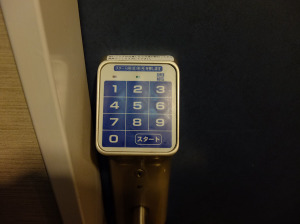
Superhotel rooms are num locked. Which is good because then you don’t have to worry about leaving keys at the front desk or losing them (but you can lose your pin, so don’t)
I saw a supermarket back at ritsurin station, but I check google map to be sure and finds me there’s another one even closer.
Imagine my surprise when I find that they do half price bentos… the bentos I’ve had so far on this trip are mostly 20% off, at best 40%. Now that’s a real treat.
Oh and milk is cheaper than coffee, what nonsense is this?

